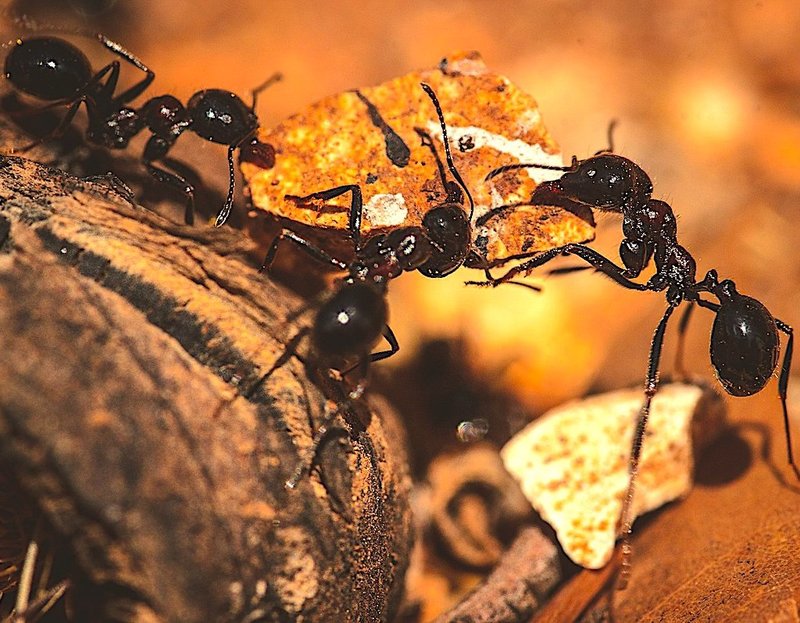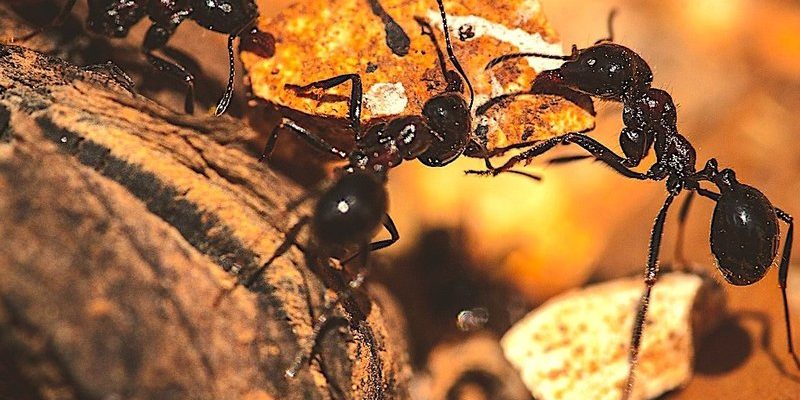
You might think of ants as mere nuisances during a summer barbecue or a cute part of nature. However, learning about them can change your perspective. They are not just pests; they are fascinating beings that play crucial roles in our ecosystem. So, grab a comfy chair and a cup of coffee, and let’s dive into 10 surprising facts about ants that’ll leave you saying, “Wow, I didn’t know that!”
1. Ants are Super Strong
You might be surprised to learn that ants are incredibly strong for their size. In fact, many species can lift objects that are 50 times their own body weight. Imagine if you could lift a small car—pretty impressive, right? This remarkable strength comes from their unique body structure and muscle layout.
Ants have a special advantage because their muscles are proportionally much stronger than ours. When you think about how tiny they are, it’s mind-blowing! This strength is essential in helping them carry food back to their colonies or defending against predators. So the next time you see an ant lugging around a crumb, just remember, it’s doing some serious heavy lifting!
2. They Have a Complex Social Structure
Ants aren’t just mindless creatures; they have a complex social structure that resembles human societies. Within an ant colony, there are different roles—workers, soldiers, and queens. Each ant knows its job and performs it with dedication.
– Workers: These are the female ants that do all the hard work, like foraging for food and taking care of the young.
– Soldiers: These ants protect the colony from threats and are generally larger and stronger.
– Queens: Their primary job is to reproduce; a single queen can lay thousands of eggs in her lifetime.
This teamwork is vital for the survival of the colony. Honestly, watching ants in action is like observing a well-coordinated team effort in a sports game!
3. Some Ants Farm Other Insects
Here’s something you might not expect: some ants engage in farming. Yes, you read that correctly! Certain species, like leafcutter ants, cultivate fungi as their food. They carefully cut leaves, bring them back to their nests, and use them to grow their own fungi.
Other ants, like aphid farmers, protect and manage aphids (tiny sap-sucking insects) on plants. In return, they harvest a sugary substance called honeydew from these aphids. This clever relationship benefits both parties, showcasing how ants adapt and thrive in their environments.
4. They Communicate Through Chemicals
Ants don’t chit-chat like we do. Instead, they communicate using chemicals called pheromones. These chemical signals can tell other ants where to find food, warn them about danger, or even help them find their way back to the nest.
Imagine following a glowing trail when you’re lost; that’s somewhat how ants navigate their world. When a worker ant discovers food, it leaves a pheromone trail back to the colony, guiding other ants right to the snack. This efficient communication system is key to their survival!
5. Ants Can Form Supercolonies
Some ant species form what’s called a supercolony, where multiple nests and colonies merge into a single vast structure. The most famous example is the Argentine ant, which spans thousands of miles across various countries. These enormous colonies can contain billions of ants working together!
Although it sounds impressive, supercolonies can be problematic. They often outcompete local ant species and disrupt ecosystems. It’s a bit like having a mega corporation take over your favorite local shop!
6. They Can Live for a Long Time
Ants aren’t as short-lived as you might think. While worker ants typically live for a few months, queens can live for years—sometimes even up to 30 years! Imagine having a job where you hold the same position for that long.
The longevity of queens is crucial for the colony, as they spend most of their lives reproducing to maintain their population. So, the next time you see an ant, consider that some of them might be around longer than you’d expect!
7. Ants Have a Diverse Diet
Ants are not picky eaters; they have a surprisingly varied diet. While many species enjoy sweets, like nectar and honeydew, others are omnivorous, munching on seeds, fungi, or even small insects.
This adaptability helps them thrive in different environments. For example, some ants are known to act as predators, helping control pest populations. In this way, ants contribute to the balance of our ecosystems, reminding us of their important roles beyond just being pests.
8. There Are Over 12,000 Species of Ants
Did you know that there are over 12,000 species of ants worldwide? They come in different shapes, sizes, and colors, each with unique behaviors and habits. Some ants, like the tiny Thief Ant, are barely noticeable, while others, like the massive Bullet Ant, can be quite striking.
This diversity means they can adapt to many habitats, from forests to deserts and even urban areas. It’s like having a global family reunion with a variety of personalities—you never know what you’ll find!
9. Ants Can Carry Disease
While ants are fascinating creatures, they can also pose health risks. Some species can carry bacteria and pathogens that may affect humans, particularly if they invade food sources. For instance, the Pharaoh ant is notorious for contaminating food with harmful bacteria.
That’s why keeping your space clean and free from food crumbs is important. It’s a simple way to minimize attracting these little visitors into your home.
10. They Play Important Roles in the Ecosystem
Ultimately, ants are vital to our ecosystems. They aerate the soil, help decompose organic material, and even aid in seed dispersal—making them key players in maintaining healthy environments.
Without ants, the balance of our ecosystems could be thrown off, leading to negative consequences for plants and animals alike. So next time you see an ant parade, remember they’re not just pests; they’re tiny, unstoppable forces of nature!
—
In conclusion, ants are far more than tiny nuisances. They demonstrate incredible strength, a complex social structure, and an important role in our ecosystems. Understanding these remarkable creatures can change how we view the natural world around us. Next time you spot an ant marching along, take a moment to appreciate the amazing journey it’s on. Who knew these tiny insects could pack such a punch?

